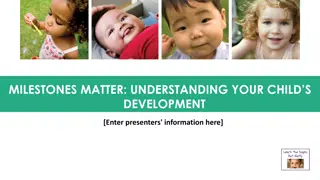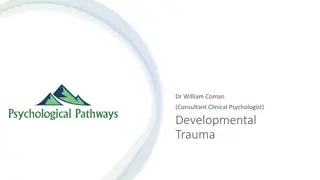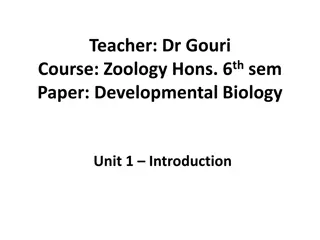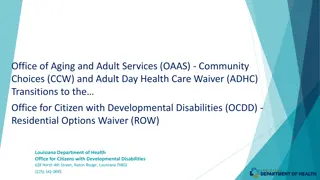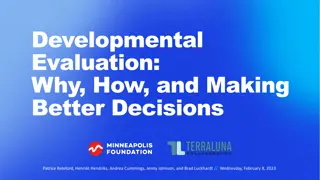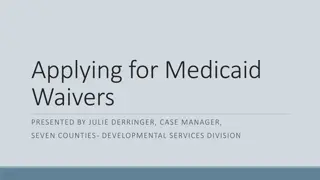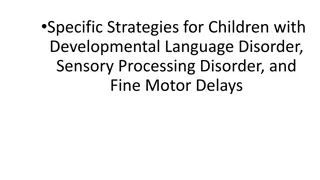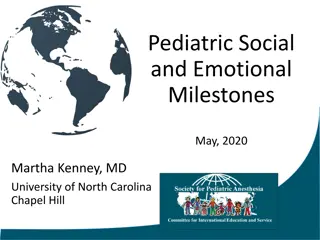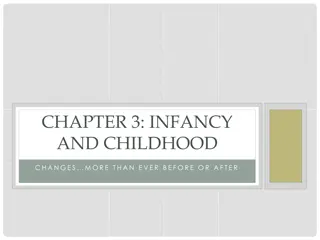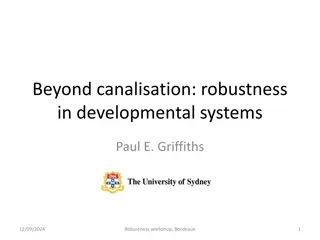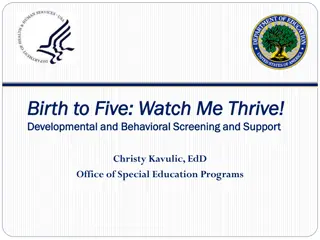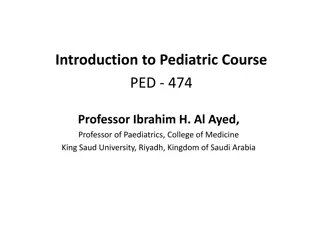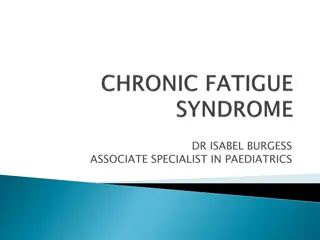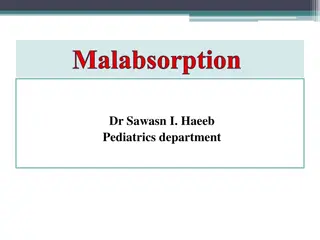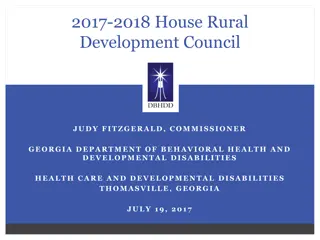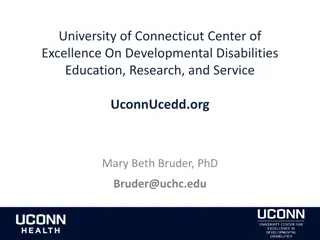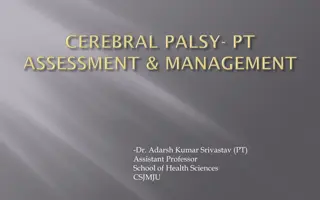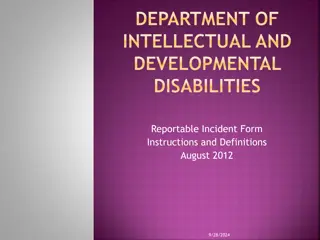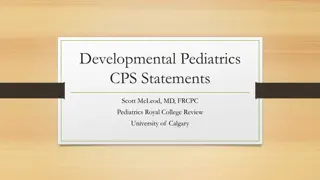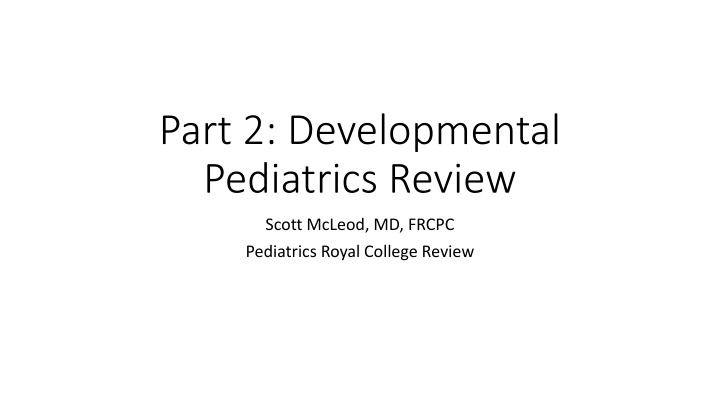
Developmental Pediatrics: Assessments and Interventions
Learn about visual and hearing impairments in child development, interpretation of psychology testing, and management strategies for behavioral issues like ADHD. Discover key insights into cognitive, adaptive, and behavioral assessments for children with developmental concerns.
Download Presentation

Please find below an Image/Link to download the presentation.
The content on the website is provided AS IS for your information and personal use only. It may not be sold, licensed, or shared on other websites without obtaining consent from the author. If you encounter any issues during the download, it is possible that the publisher has removed the file from their server.
You are allowed to download the files provided on this website for personal or commercial use, subject to the condition that they are used lawfully. All files are the property of their respective owners.
The content on the website is provided AS IS for your information and personal use only. It may not be sold, licensed, or shared on other websites without obtaining consent from the author.
E N D
Presentation Transcript
Part 2: Developmental Pediatrics Review Scott McLeod, MD, FRCPC Pediatrics Royal College Review
Visual Impairment on Development Gross motor domains (spatial awareness) Speech and Language domains (recognition of lip movements, imitation, coordinated eye contact with vocalization) Social domains (lack of object permanence development, disinterest in peers) Blindisms: careful inspection of objects up close, eye pressing, other stereotypies
Hearing Impairment Handout on understanding Audiogram
Understanding and Interpretation of Psychology Testing Psycho-educational testing usually includes: Cognitive measures - Weschler Intelligence Scales for Children Achievement measures Weschler Individual Achievement Test Adaptive measures Vineland Adaptive Behavioural Scales, Adaptive Behavioural Assessment System Those are the basic tests, some also include tests which elicit features of attention/inattention, some have anxiety rating scales, parent interview, behavioural observations, etc
Interpretation Generally, most reports come with an interpretation Psycho-Educational reports can reveal: Intellectual Disability (bad scores of the Cognitive Test and Adaptive test) Specific learning disorders (bad scores on the Achievement Tests, must also have normal cognition) Dysfunction in adaptive function (Poor Adapative Test scores) Behavioural problems (from parent history, observations, teacher report)
Question A 4 year old boy presents to clinic with his mother at the request of the school teacher due to being disruptive in the classroom setting. His mother had a perinatal CMV infection. ADHD rating scales were completed which revealed clinical impairments suggestive of ADHD. What is the next BEST step in management? 1) Trial of family based and psychological therapy for ADHD 2) An Individualized Educational Plan may be initiated 3) Advocate for an assistant to be present in the classroom 4) Complete a hearing assessment
Answer A 4 year old boy presents to clinic with his mother at the request of the school teacher due to being disruptive in the classroom setting. His mother had a perinatal CMV infection. ADHD rating scales were completed which revealed clinical impairments suggestive of ADHD. What is the next BEST step in management? 1) Trial of family based and psychological therapy for ADHD 2) An Individualized Educational Plan may be initiated 3) Advocate for an assistant to be present in the classroom 4) Complete a hearing assessment
Developmental Delay Developmental Delay is generally defined by having a delay in development that is 2 standard deviations below expected performance in a specific domain Global Developmental Delay children under the age of 5 clinical severity cannot be consistently evaluated pertains to children who are unable to meet developmental targets in a number of areas this diagnosis involves reconsideration following a phase of time
Developmental Screening Tools PEDS Ages and Stages Questionnaire M-CHAT (specific for Autism Spectrum Disorder) Of Note: According to new guidelines published by the Canadian Medical Association in 2016, screening tools should no longer be applied to healthy children with no risk factors for developmental delay, yet surveillance should continue
Reasons to Investigate Global Developmental Delay Clarification of etiology Provision of prognosis or expected clinical course Discussion of genetic mechanism and recurrent risks Refined treatment options Avoidance of unnecessary/redundant tests Information regarding treatment, symptom management or surveillance for known complications Provision fof condition-specific family support Access to research treatment protocols Opportunity for comanagement of appropriate patients in context of a medical home to ensure best health, social and health care service satisfaction outcomes for the child and family
Evaluation of Global Developmental Delay In severe ID, a cause can be detected in approximately 80% of cases The yield is much lower in mild cases
Approach to work-up and management of developmental delay Access to therapists Audiology CK testing for children with gross motor delay SLP for speech and language delay Early Intervention clinics Behavioural Support Genetic testing
Intellectual Disability (ID) 1. Deficits in cognitive functioning/skills 2. Deficits in adaptive functioning 3. Onset during the developmental period Variability in severity based on adaptive functioning as this determines levels of support required Global Developmental Delay is a term that only applies to children before age 5 years. Not all children with GDD go on to have Intellectual Disability.
Autism Spectrum Disorder A. Persistent deficits in social communication and social interaction across multiple contexts. (Need all 3) -Deficits in social-emotional reciprocity -Deficits in nonverbal communicative behaviors used for social interactions -Deficits in developing, maintaining, and understanding relationships
Diagnostic Criteria DSM-5 B. Restricted, repetitive patterns of behavior, interests or activities (need 2/4) -stereotyped, repetitive patterns of behavior, interests or activities -insistence on sameness, inflexible adherence to routines, or ritualized patterns of verbal or nonverbal behavior -highly restricted, fixated interests that are abnormal in intensity or focus -hyper- or hypo-reactivity to sensory input or unusual interest in sensory aspects of the environment
Diagnostic Criteria DSM-5 C. Symptoms must be present in the early developmental period D. Symptoms cause clinically significant impairment in social, occupational or other important areas of current functioning E. Not better explained by ID or GDD Severity Grid requiring support, substantial support, very substantial support
What should make you wonder about ASD? Language delay or atypicality Especially if poor intent to communicate Unusual behavior Stereotypy Atypical play Resistance to change Social atypicality Poor reciprocal interactions Peer issues
Early recognition Increasing evidence suggesting signs may be present in first year Lack of response to name Gaze avoidance Not pointing for interest
Crying Infant: Question A 2 month infant has been having recurrent episodes of crying at night, the child is uncomfortable every evening for a period of several hours. It has been difficult for the parents to console the child. What is the BEST next action that should be taken: 1) Nothing, as this is infantile colic 2) Ultrasound to look for pyloric stenosis 3) pH probe to investigate for gastroesophageal reflux disease (GERD) 4) Trial of ranitidine for management of GERD
Crying Infant: Answer A 2 month infant has been having recurrent episodes of crying at night, the child is uncomfortable every evening for a period of several hours. It has been difficult for the parents to console the child. What is the BEST next action that should be taken: 1) Nothing, as this is infantile colic 2) Ultrasound to look for pyloric stenosis 3) pH probe to investigate for gastroesophageal reflux disease (GERD) 4) Trial of ranitidine for management of GERD
Colic in Children Classic teaching is 3 s Starts around 3 weeks 3 times per week 3 hours at a time Most resolves by 3 months Provide reassurance and watch for parent burn-out
Picky Eating in Toddlers Strategy Comments Functional analysis. What are the properties of the foods the child likes? If child likes food with a particular temperature or texture, try expanding the repertoire of foods with similar kind of foods first. Mealtime atmosphere. Calm, pleasant meals can improve willingness to try new foods. Food tastes better when it is eaten in a positive social context. Children who are prone to anxiety or overstimulation may benefit from a calm eating atmosphere. Social cues. Modeling eating a food by a parent is helpful, but peers are more powerful. If child has the opportunity to eat meals with other children (such as in preschool), this may be an opportunity to expand the child s repertoire of foods. Positive reinforcement. Parents should not provide material, verbal, or food rewards for eating, and children should never be punished for refusal to try a new food. When children are given a reward (dessert) for eating a food (a vegetable), they eventually learn to like the food they were rewarded for eating (the vegetable) less over time (not the desired goal).
Specific Learning Disorders Ongoing difficulties in learning over a period of 6 months despite appropriate interventions May be in written expression, mathematics, or reading Difficulties manifest in early childhood, but may not be evident until demands are raised Causes a functional impairment Normal intelligence overall on standardized measures
Attention Deficit Hyperactivity Disorder Discussion and Handouts
School Avoidance What is the differential diagnosis for school avoidance? What is the most important step in the management of school avoidant behavior?

